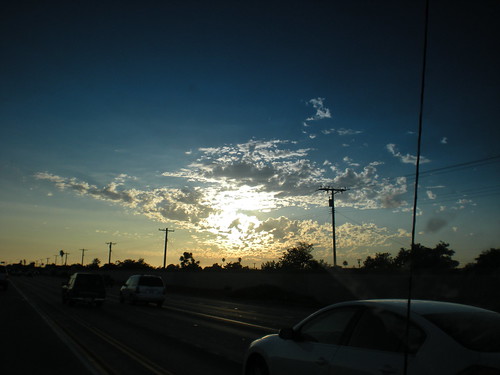
If you aren't from California, you might wonder why this surprised me.
In Los Angeles, depending on who you ask, the average July rainfall is somewhere around or below 0.01 inches... basically unmeasurable. It is not terribly rare to get sprinkles of the sort I experienced, but heavy, persistent rain of the sort that greeted me when I arrived back in Pittsburgh is very rare in coastal southern California during the summer months. In contrast, Pittsburgh averages almost 4 inches of rain in July alone. Pittsburgh usually experiences relatively copious precipitation in every month of the year, although much of it in the winter can fall as snow. Despite what some people believe, Los Angeles is not actually a desert, because in the winter it can be quite rainy. Los Angeles usually receives more precipitation than Pittsburgh in the winter, in fact, though this varies widely from year to year. One year when I lived near Los Angeles over 15 inches of rain fell in 15 days in January. Yet, that July was still virtually rainless, like every other July.

These clouds southwest of Los Angeles represented some moisture at high elevations. In Pittsburgh seeing clouds like this might mean a storm was on the way. In Los Angeles, the clouds made for a pretty sunset but then drifted away.
I write about Pittsburgh a lot here because it is where I am working on my project and living for the summer . However, water and runoff issues are important nearly everywhere in the world where people live. Rain gardens and rainwater cisterns are useful in Los Angeles as well as Pittsburgh but for different reasons. Los Angeles is often short on water and imports it from far away places, and these supplies are becoming increasingly sparse. Rain gardens in Los Angeles are less important for reducing runoff and more important for slowing down water so that it can enter local aquifers and be reused later. Rain barrels provide water that otherwise would have to be imported from many miles away. On the other hand, Los Angeles does not have a combined sewage and stormwater system. Heavy rains can sometimes cause sewage overflows as water leaks into manhole covers and other sewer connections, but this is relatively rare.
Instead, water is routed into a series of famous, but unfortunate, storm drains.

This is the Dominguez Channel, the 'creek' I grew up near. Needless to say this huge ditch did not provide the values that are provided by Panther Hollow Run and other urban creeks in Pittsburgh. Anyone who feels that intact urban creeks are low-value should consider the alternative.
So, in short, there is water work to do everywhere.

No comments:
Post a Comment